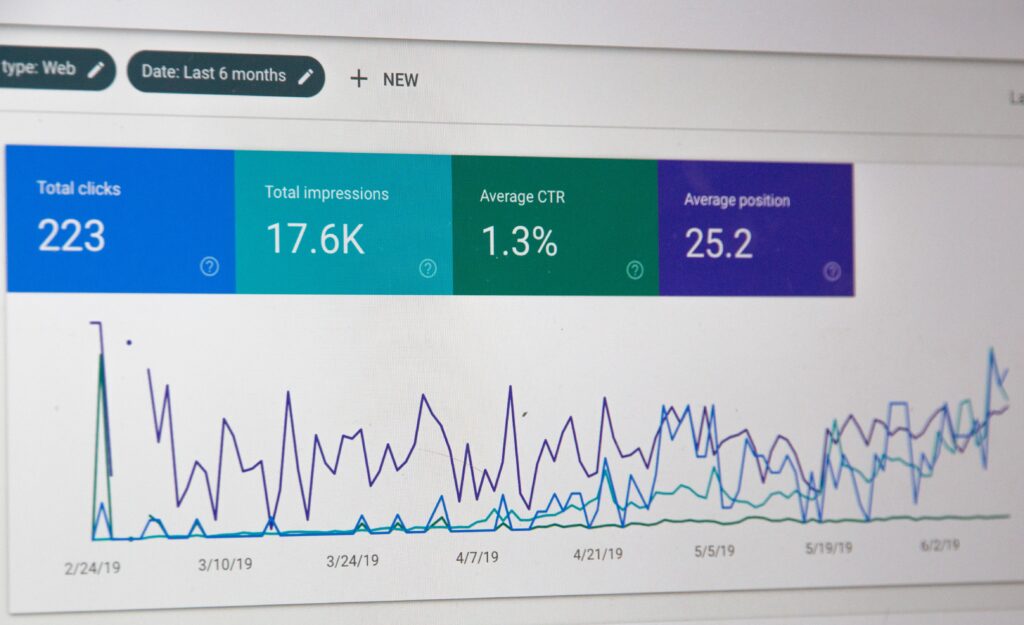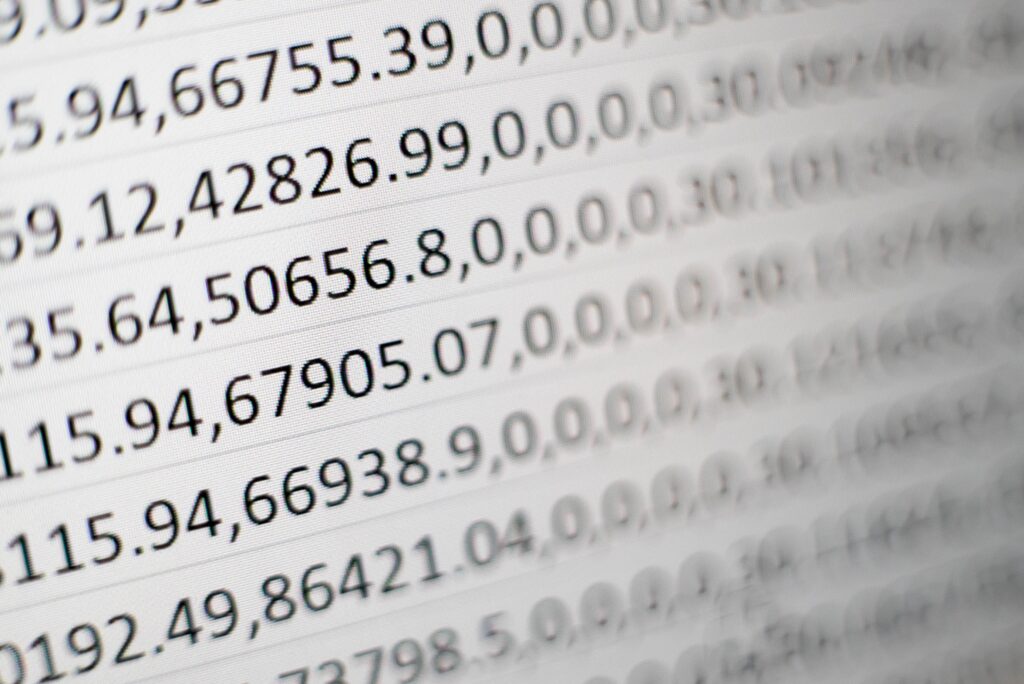The Ultimate Guide to Data Analysis
- 31 Jul 2023
- 14 min read

In a world brimming with information, the ability to manipulate and learn from that data has become a game-changer. As industries continue to embrace digital transformations, the need for data-driven decision-making will only intensify.
The World Economic Forum estimates that, by 2025, the number of jobs requiring data analysis skills will increase by 15%, making it one of the most sought-after and highly-valued professions. Data analysts are armed with expertise in statistical analysis, machine learning, and data visualisation skills. They will find themselves at the forefront of the current digital revolution.
Data analytics is not just a career; it is a transformative force propelling businesses and organisations toward success in the digital era. This article will serve as the ultimate guide to data analytics, explaining exactly what it is, why it matters, and how to make it your career.
What is Data Analysis?
The role of a data analyst generally includes collecting, cleansing, and interpreting data sets to answer questions and solve problems for a business. As a data analyst, then, you could expect to examine data sets to reveal patterns, highlight relationships, or predict trends of consumers. Extracting these insights from data helps businesses solve problems, make better-informed decisions, and drive improvements overall.
The core of data analysis is empowering users to make informed decisions by extracting meaning from data.
The expertise of a data analyst is not confined to a singular industry. Data analysts find themselves working in a variety of industries, including business, finance, criminal justice, science, medicine, and government.
Why is Data Analysis Important?
These days, data is everywhere. No matter the industry, the amount of data being collected by businesses continues to increase. These vast amounts of data are rich with insights if they are analysed properly. This presents unparalleled opportunities for innovation and creative problem-solving.
Data analysts help ground business decisions with empirical data, allowing decisions to be made based on real world evidence. By extracting insights and deriving knowledge from data, businesses can enhance their decision-making processes.
This doesn’t mean data analysis is infallible; it certainly has its limitations. Nonetheless, it still remains the best tool we have for predicting future trends and drawing conclusions from past events, to usher in innovative and creative business solutions.

What Does A Data Analyst Do?
Broadly, a data analyst’s responsibility is simple: use data to address crucial questions and share those valuable insights for business innovation.
After deriving insights from the data, a data analyst shares those insights with key stakeholders and decision-makers, influencing the strategies they devise that ultimately shape the future of the company. The impact of a data analyst goes far beyond analysis – it also influences the direction and outcomes of organisations.
Simultaneously, a data analyst plays a pivotal role in overseeing the processes of data collection and storage. They will typically ensure that data is acquired, managed, and stored systematically and efficiently. In order to do so, they must also establish guidelines and standards for data quality, ensuring the accuracy, consistency, and reliability of the information used for analysis.
Consider a scenario where a retail company is seeking to understand the factors influencing their customers’ satisfaction and loyalty. A data analyst would be responsible for gathering and analysing things like customer feedback, transactional data, and demographic information. Through statistical and algorithmic analysis, they uncover patterns and correlations that shed light on key drivers of customer satisfaction and loyalty.
Once these insights are uncovered, they then present their findings to executives or the marketing team, who then use that information to implement targeted strategies to improve customer experience and strengthen brand loyalty.
In this example, a data analyst is essential to not only pluck out valuable insights, but also to empower the company to make data-driven decisions to help them reach their stated goals.
Data Analysis vs Data Science: What’s the Difference?
Data analysts and data scientists play distinct yet vital roles in leveraging data for a business’ success. Still, it can be hard to differentiate the two roles without some specific context.
Professionally, data analysts focus on interpreting past data, uncovering patterns and trends, and presenting insights through data visualisations. They help answer questions and provide solutions based on collected, past data.
Data scientists, on the other hand, delve deeper into data. Utilising techniques like data mining and machine learning, they focus on identifying patterns, running experiments, and developing predictive models for future scenarios. They offer solutions to guide companies in their decision-making from a future-first perspective.
In short, data analysts analyse the past, while data scientists shape the future with their findings and recommendations. Together, they are a digital force that harnesses the power of data for business growth.
The Process of Data Analysis
As data continues to grow, the increasing volume and intricacy of data call for effective and efficient processes to unlock its true potential. This is basic breakdown of the different phases of the data analysis process:
- Define the question
In the data analysis process, the most challenging phase is to define the question that needs to be answered. Deciphering the root cause of an issue requires a profound understanding of a business’ needs and aspirations, and involves a deep dive into metrics, KPIs, and other crucial indicators.
This stage involves conducting initial analyses in order to gain valuable insights. It is crucial that this stage is done properly, as it lays a strong foundation for the entire data analysis process.
- Collect the data
After defining the question, a data analyst then determines the most suitable data to address that question. The types of data they usually collect here include quantitative data – like marketing figures – or qualitative data – like customer reviews.
Data types can be further categorised into 3 main groups: first-party data (or data collected directly by an organisation), second-party data (or first-party data collected by one organisation used by another), or third-party data (or data aggregated from multiple sources by a third party).
If the necessary data is incomplete or missing, a data analyst will be responsible in this step for devising a strategy for data collection. This includes different methods like surveys, social media monitoring, website analytics tracking, and online tracking in general.
- Clean the data
Freshly-collected data in its raw form is typically unorganised and messy. Before proceeding with the necessary analysis, that data must be cleaned up. In order to clean data, errors, duplicates, and outliers must be removed, along with any irrelevant data that does not contribute to the analysis being done.
Additionally, the data must be restructured in a more meaningful manner depending on the type of analysis being done. Gaps must be filled in, too, in order to make the data more accurate. Data that is highly accurate can provide more valuable insights in the data analysis process.
- Data validation
After it is cleaned, the data must be validated. This process involves verifying whether the data meets the specific requirements of the analysis being performed.
Often, data analysts discover in this step that the data falls short of their expectations. They must then return to the previous stage and reassess their process to figure out what to do next.
- Analyse the data
Once the data has been validated, identifying a suitable approach to probing the data is vital. The four main types of data analysis are as follows:
- Descriptive analysis: What happened?
- Diagnostic analysis: Why did it happen?
- Predictive analytics: What will happen?
- Prescriptive analysis: What actions should be taken?
Each type of analysis serves a distinct purpose, providing valuable insights for more-informed decision-making.
- Share the results
After conducting the analysis and extracting important insights, the final step lies in effectively communicating these findings to those who initiated the project in the first place.
While it is essential to interpret the data accurately, it is equally important to be able to present those findings clearly and concisely. A data analyst is often working with marketing executives or stakeholders who are on time constraints and may not possess much technical expertise.
- Embrace failure
It must be known that this is the ideal path on paper. In practice, the journey of a data analyst is seldom linear. It is an iterative process that requires a nimble analyst to constantly revisit and reiterate certain stages and new insights and challenges emerge.
Importantly, data analytics is inherently complex. Each project will require its own unique approach for success.
For example, during data cleaning, you may uncover patterns that raise new or better questions, prompting a return to step one to redefine your objective. Similarly, exploratory analysis can reveal previously overlooked data points that change the results of your analysis. Alternatively, you may encounter misleading or erroneous results due to data errors or human mistakes.
While these challenges may feel like setbacks, they are all a part of the process. Mistakes are a built-in part of data analysis. The ability to identify and rectify errors is a true skill of a data analyst that helps them make truly innovative recommendations.

Data Analyst Tasks and Responsibilities
A day in the life of an average data analyst revolves around leveraging the power of data to drive decision-making, optimise processes, and help your company gain a competitive edge. Here are some examples of tasks and responsibilities a data analyst must carry out:
- Cleaning data sets
Typically, data analysts are responsible for cleaning and processing data sets, checking for quality and reliability. In order to do so, data analysts use specific techniques to handle missing values, check for outliers, and fix inconsistencies in data.
Data analysts examine data carefully, identifying and rectifying errors, standardising formats, and removing irrelevant information. This process ensures that the subsequent analysis is based on accurate and consistent data.
- Developing predictive models using statistical techniques
Predictive models help data analysts make educated guesses about future outcomes based on trends and patterns in empirical data. Using these models, businesses can optimise their many processes.
By applying techniques like regression analysis, machine learning algorithms, and other statistical methods, data analysts can create models that predict future trends, outcomes, and behaviours.
- Visualising data
A key responsibility of a data analyst is to visually represent data insights with charts, graphs, and other types of visualisations. These allow stakeholders to more easily understand key insights, patterns, and trends, to help facilitate data-driven decision-making.
Data analysts use tools like Tableau, Power BI, or Python libraries like Matplotlib and Seaborn to present their information as simply as possible.
- Developing algorithms for machine learning and AI
Data analysts spend a lot of their time developing algorithms that can automatically learn from data. Using programming skills and statistical analysis, they can create robust algorithms that can effectively process and analyse large datasets, enabling businesses to automate processes and derive actionable insights.
Data Analysts Leverage the Power of Data
With the huge amount of data companies have access to, companies need specialised analysts to make sense of it. Data analysts play a critical role in helping companies leverage this data in many ways. Here’s how they contribute:
- Not just for tech, but any industry:
Data analysis is not just limited to tech. It has become an essential part of industries including finance, healthcare, retail, manufacturing, and security to name a few. Data analysts help companies harness the power of data to make strategic choices and adapt to changing market dynamics.
- Improve organisational efficiency:
By analysing large amounts of data from various different sources, data analysts are able to identify inefficiencies within an organisation.
By scrutinising processes, workflows, and resource allocation, they can pinpoint specific areas that can be optimised or improved. They also identify bottlenecks and earmark redundant activities to streamline operations, reduce waste, and improve productivity.
- Streamline processes:
Data analysts are always focusing on optimisation – or making the most effective use of their resources. Through careful examination of operational data, analysts identify areas where processes can be automated, streamlined, or standardised.
By implementing these improvements, organisations can reduce manual errors, decrease turnaround times, and increase overall efficiency. This, in turn, improves internal operations, but also enhances customer satisfaction.
- Reduce costs:
By looking at data related to expenses, resource utilisation, and supply chain management, data analysts help identify areas where costs can be reduced without compromising quality or performance.
These insights can help businesses optimise their costs, making better-informed decisions. This includes negotiating better vendor contracts, optimising inventory levels, or identifying cost-saving measures in production processes. Effectively managing costs helps companies improve profitability, offer competitive pricing, and invest resources in innovation and growth.

Learn Data Analytics with ALX Africa
With big data only getting bigger, companies increasingly need professionals who can make sense of it all, extract insights, and apply them to the business. Companies are looking for data analysts to enhance customer experience, drive sales, and make more strategic decisions.
The ALX Africa Data Analytics programme will prepare you for a lucrative career in data analytics. Developed in partnership with ExploreAI, this course is designed to kickstart your career in data by teaching you how to do data analysis like a pro. Over the course of 6 months, you will learn the necessary skills to get a good job in data analytics in any industry.
Applications for our next cohort close on 12 September, so be sure to enrol now to save your spot!
Summary
In the 21st century, data reigns supreme, shaping the way we navigate the world. It has become a vital resource for every major industry, demanding individuals who possess the ability to delve into its intricacies, comprehend its complexities, and provide invaluable insights to drive organisation
Amidst this data-driven landscape, data analysts emerge as the unsung heroes, wielding their skills to not only steer companies through turbulent waters but also revolutionise the utilisation of people, resources, and time, optimising them to achieve maximum efficiency.
As we look ahead, it becomes increasingly apparent that the demand for data analysts will continue to surge. The importance of their expertise is on an upward trajectory, and those who recognise this are positioning themselves for success.
By immersing yourself in the ALX Global Data Analytics programme, you will master the art of data analysis, unlocking the transformative power that lies within. Equipped with this knowledge, you can make significant contributions to organisations in the digital era, helping them thrive in an increasingly data-centric world.
FAQs
1. What is data analysis?
Data analysis is the process of examining, interpreting, and extracting meaningful insights from raw data to uncover patterns, trends, and correlations. It involves using various statistical and analytical techniques to organise, clean, and transform data into a structured format that can be analysed. Data analysis enables businesses and individuals to make informed decisions, identify opportunities, solve problems, and gain a deeper understanding of the information contained within the data.
2. What is the difference between data analysis and data science?
Data analytics and data science are related fields that involve working with data, but they have distinct differences. Data analytics focuses on examining historical data to uncover patterns, trends, and insights that can drive business decisions and optimise processes. It primarily involves applying statistical and analytical techniques to structured data.
On the other hand, data science encompasses a broader scope, including the development of algorithms, machine learning models, and predictive analytics to extract insights and solve complex problems using both structured and unstructured data. Data science often involves programming and advanced statistical techniques.
3. What skills are required for a data analyst?
The skills required for data analysis include proficiency in statistical analysis, data visualisation, and data querying using tools like SQL. Strong analytical thinking and problem-solving abilities are crucial, along with a solid understanding of mathematics and probability.
Proficiency in programming languages such as Python or R is often necessary for data manipulation and analysis. Additionally, good communication skills and the ability to translate data findings into actionable insights are highly valued in the field of data analysis.
4. What is the role of a data analyst?
The role of a data analyst is to collect, organise, and analyse large datasets to extract meaningful insights and inform business decisions. They employ statistical techniques and data visualisation tools to identify trends, patterns, and correlations within the data.
Data analysts also create reports and presentations to communicate their findings to stakeholders, providing actionable recommendations for optimising business processes, improving efficiency, and driving strategic decision-making. They play a crucial role in helping organisations leverage data to gain a competitive advantage and achieve their goals.
